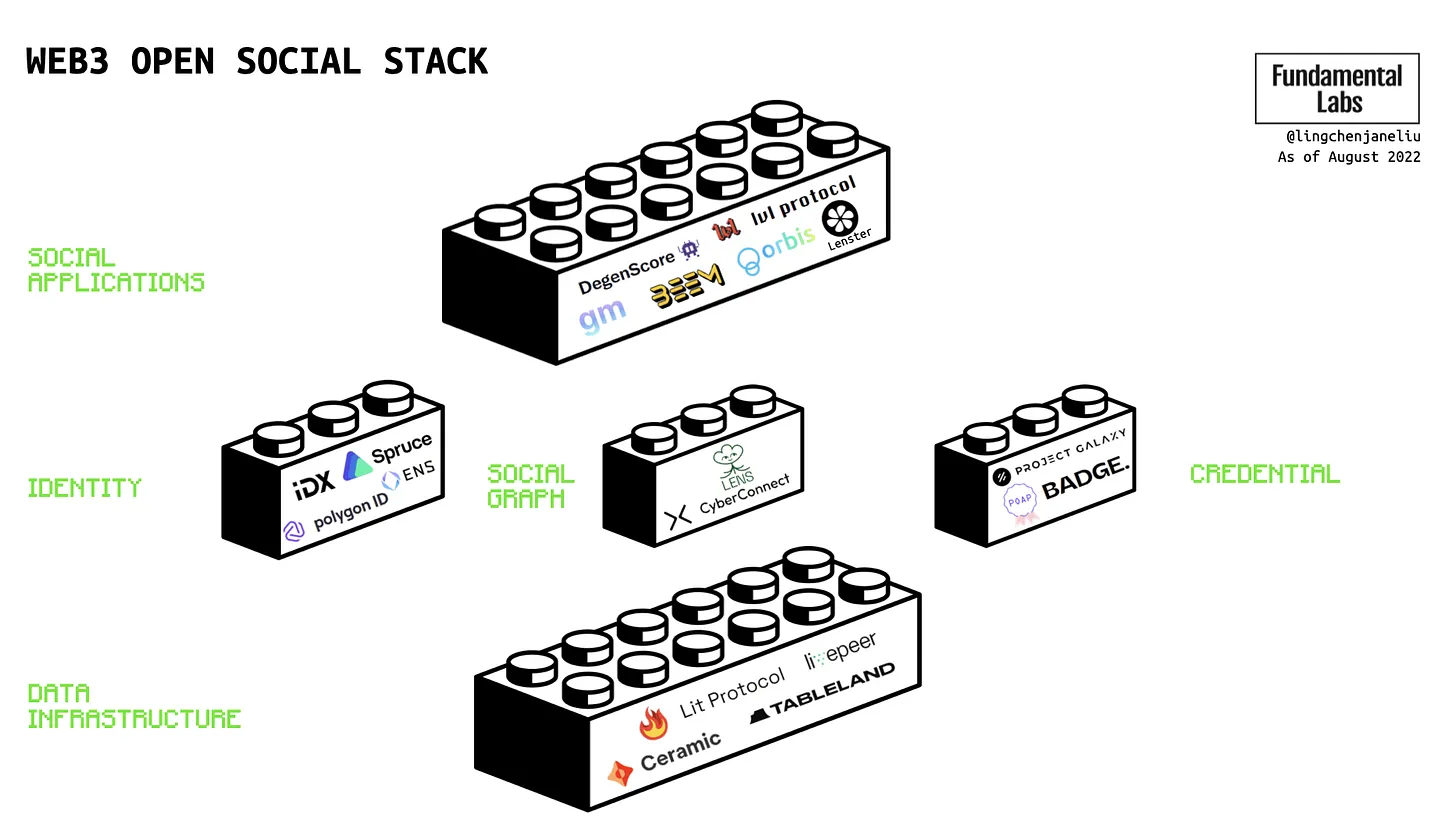The future of web3 social: Opportunities & Challenges
Aug 31, 2022 . 3 min read . 272 views
title: 'The future of web3 social: Opportunities & Challenges' publishedAt: '2022-08-31' summary: 'The problem with web2 Social...' category: '#web3 #social'
The problem with web2 Social
-
Phase-1: Centralized platforms start by providing value to users to build strong network effects.
-
Phase-2: Once they have strong network effects they need to find ways to leverage the network to generate revenue.
-
In this process, they end up doing things (e.g extracting data for ads) that hamper the overall end-user experience.
-
At this point users end up migrating to a new social media platform that is at its Phase-1. We have seen this play out with FB-Insta and many others.
-
As the identities on web2 social platforms are siloed when the user migrates to a new platform it is hard for them to bring along their content and social graph with them.
web3 open social stack

Data Infrastructure layer
Provides decentralized storage options
Ceramic Network: web3 AWS built on top of IPFS Tableland: web3 SQL built on top of IPFS
Social Graph
Stores the interconnections among people, groups and organizations in a social network.
Lens Protocol is a composable and decentralized social graph. Social applications include user profiles, followers, posts, comments, shares, likes, mirrors (retweet), and collect (save/bookmark).
A social protocol for building dApps. Applications include creating user profiles, following other users and following/follower lists.
Decentralized Identity via Decentralized Identifiers(DID)
Decentralized identifiers (DIDs) are a new type of identifier that enables verifiable, decentralized digital identities.
Public Identity
Makes identities more readable in social relations. e.g: ENS, Lens, Nametag
Master Identity
Separation of account authorization and account access. Users can manage their wallet accounts like in web2 applications. The key to the wallet accounts can be retrieved and reset when risks are detected or keys are lost. e.g: Web3Auth, ERC-4337 account abstraction
Proxy Identity
Disconnect wallet address and account. It’s like having an alias for your Gmail account. Proxy Identity is tied to a user’s master identity. e.g: Unipass, Spruce ID, Web3Auth and IDX
Social Applications
User-facing front-end layer.
As the applications now no more have the social graph it is very hard for the apps to defend against competition as users can easily take their data with them and switch.
Challenges for web3 Social
- The current landscape is driven by speculation and financial incentive
- Web3 lacks the human touch. Currently, web3 is mostly about money with complex wallet addresses. Something like a Soulbound Token(SBT, permanent, non-transferrable NFTs) proposed by vitalik might make the space more human.
- Data composability is not easy. Businesses create and use different models as per their requirements. It is hard to do this with a one size fits all approach
- web3 needs to find a business model beyond just being a decentralized alternative.